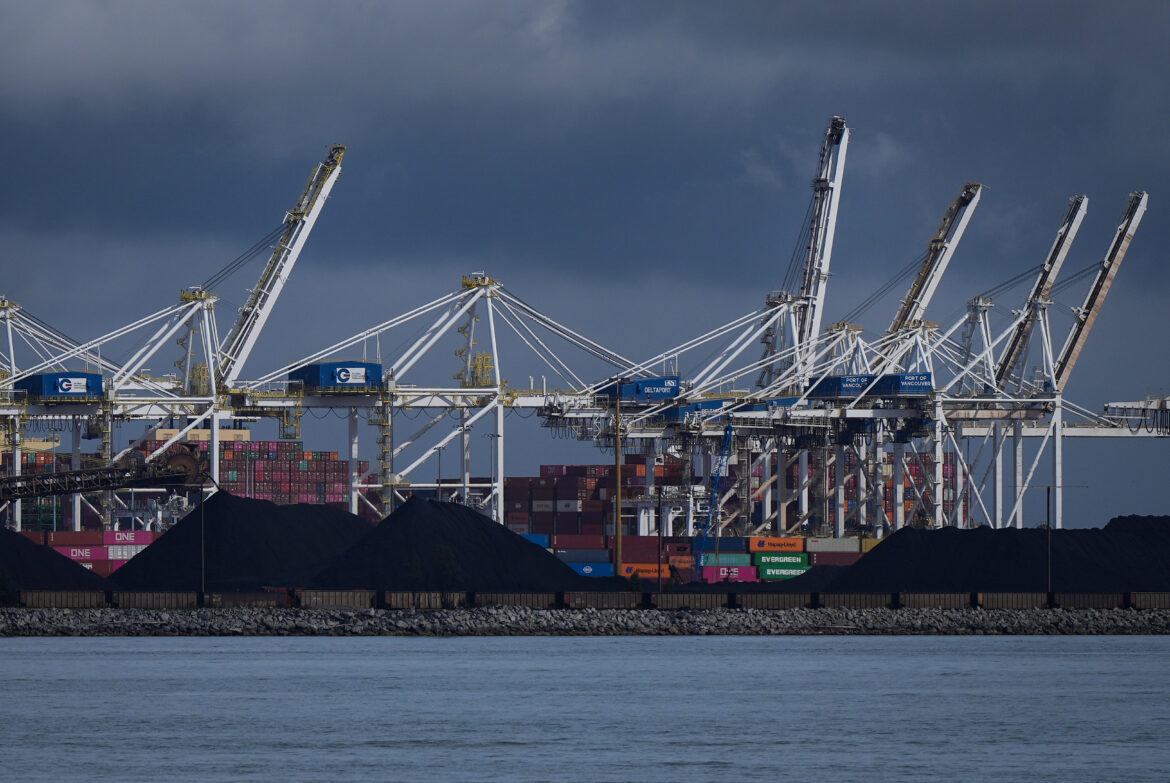By Ashley Joannou
Todd Rutter calls himself the “most non-tech person you’ve ever met” but he’s turning to technology and lessons learned during the COVID-19 pandemic to help weather the dizzying tariff policies of U.S. President Donald Trump.
The Edmonton-based co-owner of A Cappella Catering Co. said inflated food costs as pandemic restrictions started lifting years ago nearly killed his 35-year-old company, and he has to do everything he can to prevent the roller-coaster of changing U.S. tariff threats from doing it this time.
The company has created a spreadsheet to track the cost of the 100 most common ingredients they use in case there’s a need to implement a “tariff surcharge” on customers to keep the business afloat, he said.
The pandemic nearly cost them their businesses, Rutter said.
“So when all this stuff started happening, this talk of tariffs and our economy, I mean, I absolutely had to do everything I could possibly think of to fight it, to survive,” he said.
Rutter said for his business, and many like it, margins are so thin that it doesn’t take much of a cost increase to spell the end.
“We really don’t want to do it. But, for our survival, if we need to, then we have to, or we won’t survive.”
In an international trade environment where Trump has imposed, paused and then imposed again, tariffs on countries including Canada, Canadian businesses and individuals are doing their best to manage and prepare for whatever might come next.
Many shippers have found themselves in a form of stop-and-go traffic, where they’re compelled to halt shipments in response to yet another tariff announcement from the White House, and then race to haul cargo over the border ahead of the next levy deadline.
Dave Pentland, vice-president of Carson International, a licensed customs broker based in Vancouver, said many clients scrambled to alter shipment plans Tuesday after Trump announced tariffs of 104 per cent on imports from China.
“Just yesterday, we had a lot of cargo that was being held in Asian ports. They’re paying for storage over there,” said Pentland in an interview on Wednesday.
“They just weren’t prepared for those, so they parked them,” he said of a textiles importer.
In the latest swerve, Trump announced Wednesday a 90-day pause on the levies on most nations slapped with the highest duties under his “reciprocal” tariff regime but kept in place a 10 per cent tariff on nearly all global imports.
“Freight is now moving again” — after some hefty storage fees — Pentland said.
“I’m hoping that the world settles down a little bit and we decide to rethink this whole thing. But who knows?”
As of Wednesday, Trump was not offering any changes to the tariffs hitting Canada.
In early March, the president imposed — and then partially paused — 25-per-cent across-the-board tariffs on Canada and Mexico, with a lower 10 per cent levy on energy and potash.
Imports that fall outside the Canada-U.S.-Mexico Agreement on trade have been hit with the 25 per cent tariff, while tariffs on automobiles, steel and aluminum imports to the U.S. also remain in place.
BC Chamber of Commerce CEO Fiona Famulak said the constantly changing landscape has left her and many of the province’s businesses with a sense of “whiplash.”
She said that while businesses appreciate the latest 90-day pause, the threat still looms.
“Who knows what will happen in the next 90 days? We know that the administration can move on a dime. So, the threat of tariffs remain. Businesses need certainty in order to operate, in order to plan forward and to invest,” she said.
Famulak also drew parallels to the COVID-19 crisis.
“I would argue that the tariff situation is more challenging than the pandemic. The pandemic was somewhat predictable. We were using science,” she said.
She said during the pandemic businesses needed to be nimble, and they will have to rely on those skills again while focusing on what they can control.
“Plan forward as much as you can, reduce costs where possible, and explore opportunities to diversify markets,” she said.
Famulak said in the lead-up to Trump’s global tariff announcement, which he dubbed “Liberation Day,” B.C. businesses were actively laying off workers, either temporarily or permanently, while some manufacturing businesses actively moved some parts of their operations into the U.S.
“There will be pain. This is a very, very difficult situation to navigate. And the amount of uncertainty about whether tariffs are on, or off, or paused, or whatever, it’s no way to run a business.”
In Surrey, B.C., Ramona Kaptyn said she’s “afraid to look” at what the tariff situation has done to her retirement savings.
A former director on the national board of the Canadian Association of Retired Persons, Kaptyn said she’s fortunate to have retirement savings but many seniors rely on old age security and the Canada Pension Plan.
“I’m now in my latter 70-plus years, and if the market keeps crashing, I could easily outlive my savings and not have the lifestyle that I have now. So, I am very, very concerned about what is happening with the tariffs,” she said.
— With files from Christopher Reynolds






